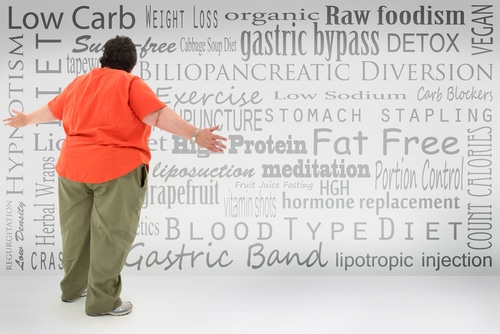
What Are Obesogens?
Obesogens are chemicals in the environment that alter the storage and breakdown of fat, disrupt metabolism or alter appetite, thereby contributing to weight gain. These rogue chemicals have the ability to alter metabolism or appetite in such a way that fat storage is more likely. Some chemicals that researchers are looking at as possible obesogens include BPA in plastics, certain pesticides in the foods we eat, Teflon coatings on non-stick pans, some ingredients in personal care products and PCBs, industrial chemicals that build up in the environment.
Where research suggests obesogens have the most impact is on children. It seems early exposure may alter a child’s hormones and cause them to lay down more fat cells early in life. These fat-priming molecules seem to exert their effects as far back as in-utero. Research shows they can be passed from the mom-to-be to the developing fetus, laying the groundwork for obesity after birth. An example of a chemical passed from mom to fetus that followed this pattern was DES, a synthetic estrogen used up until 1971 in some women to reduce the risk of miscarriage. Female mice exposed to this chemical in-utero experience significant weight gain after birth and during adulthood.
It’s not clear whether obesogens have the same effects during adulthood, although exposure to these chemicals almost certainly has some negative health consequences. Some of these chemicals are linked with an increased risk for other health problems like type 2 diabetes.
Avoiding Exposure to Obesogens
Whether exposure to obesogens alters fat metabolism and appetite in adults is still unknown. Researchers at the University of California at Irvine are currently investigating this issue. As UC Irvine biologist, Bruce Blumberg points out to take the safe route and limit your exposure to chemicals suspected of contributing to obesity and other health problems.
How can you limit your exposure? Start by eliminating plastic storage containers from your home. It may not be enough to simply choose BPA-free plastic since other components like phthalates used in the manufacture of plastic may alter hormone balance and indirectly contribute to obesity. Choose glass and stainless steel for food storage, and never put anything made of plastic in the microwave. The heat encourages the leaching of harmful chemicals into food.
The other thing you can do is limit packaged foods. Packaged foods in grocery stores are in plastic containers or wrapped in plastic, another potential source of exposure. Choose organic foods whenever possible to limit exposure to pesticides. Be aware of what you’re putting on your body and using to shampoo your hair. Many personal care products contain possible hormone disruptors that may contribute to obesity. Get a water filter to reduce impurities in your water, and avoid eating large fish at the top of the food chain or bottom feeders that can accumulate more PCBs.
The Bottom Line?
Obesity is a multi-faceted problem, and there are likely a number of reasons why it’s on the rise. One factor may be chemicals we’re exposed to in the environment. More research is needed, but you may want to take steps to reduce your exposure until more is known.
References:
J Toxicol Environ Health A. 2008;71(15):1032-42.
Mol. Cell. Endocrinol. 304. 1-2: 19-29.
Environ. Health Perspect. 120(6): 779-89.
The University of California at Irvine “Big on Obesogens”
Related Articles By Cathe:
6 Causes of Weight Gain that Have Nothing to Do with Diet and Exercise
3+ Ways Obesity May Be Fueled by the Environment We Live In
Why is the Obesity Problem Growing Faster in Women than Men?

